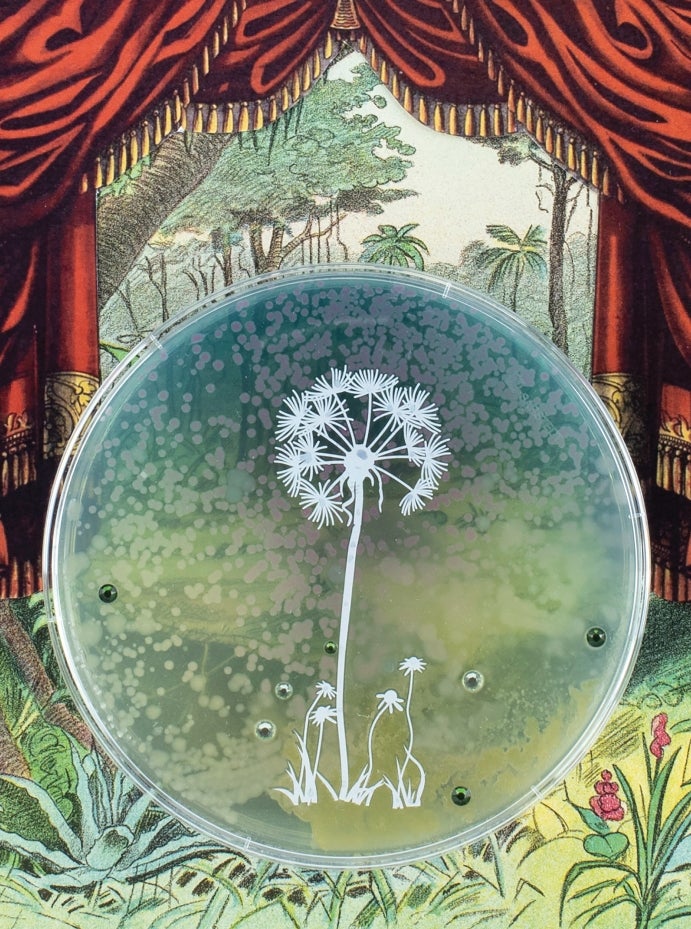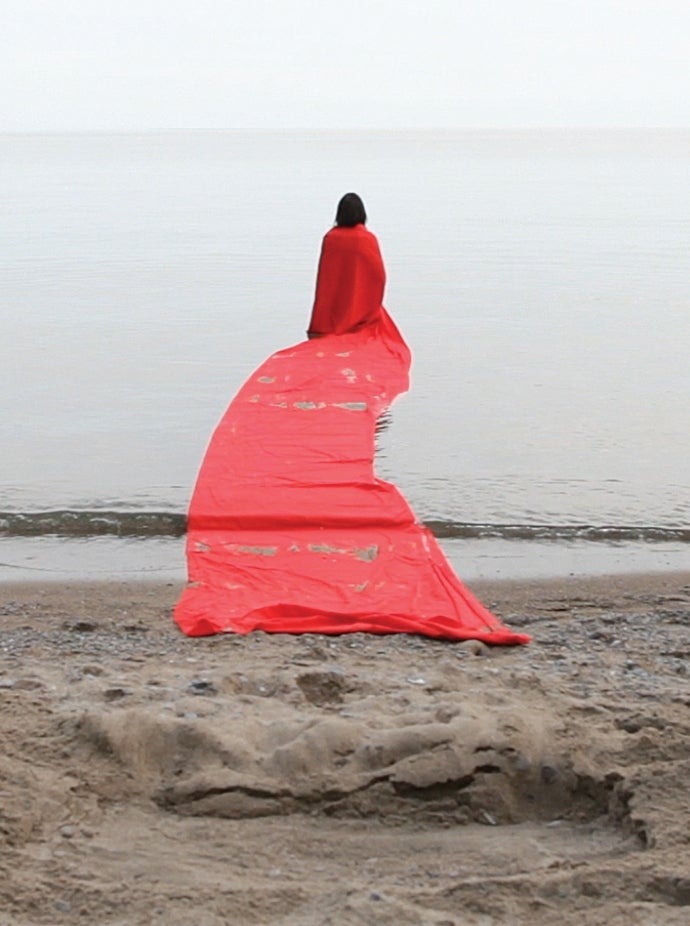 Gallery
One
Gallery
One
Jennifer
Willet
Baroque
Biology

Baroque Biology presents a feminist science-fiction where biotechnology manifests interspecies collaboration, reproduction, theatre and storytelling as a means to re-imagine our shared biotech future. The exhibition presents a series of imaginary biotechnological vignettes including digital images, performative sculptures, and living cultures; where non-human organisms interact with humans in an effort to convey information about complex biological processes. The artist reimagines laboratory aesthetics as feminine, gawdy, and fantastical in direct contradiction to the norms of contemporary laboratory design. The artworks are counterintuitive, imagining biotechnology research as an integrated part of our planetary ecology and everyday life. Like fairy tales for a biotech future, each allegory focuses on a mammal, microbe, plant or insect, that attempts to communicate with humans in a helpful manner about the biological processes they employ for survival, reproduction, or aesthetic pleasure. Baroque Biology critiques institutional hierarchies by encouraging unconventional daydreaming and welcoming new models of participation in the laboratory.
 Gallery
Two
Gallery
Two
Melissa
General
Reclamation

Reclamation was created during a residency at Artscape Gibraltar Point on Toronto Island. During the course of my residency I frequently visited the shoreline, digging into the sand and recording the waves of Lake Ontario with a hydrophone in an attempt to reconnect and intervene with the water, land and self.
The exhibitions run from January 16 to March 7, 2020.
Jennifer Willet, Baroque Biology (Paper Theatre), detail, 2019. Photo Justin Elliott.
Melissa General, Reclamation, detail, 2014, digital video, 6:27 min. Image courtesy of the artist.